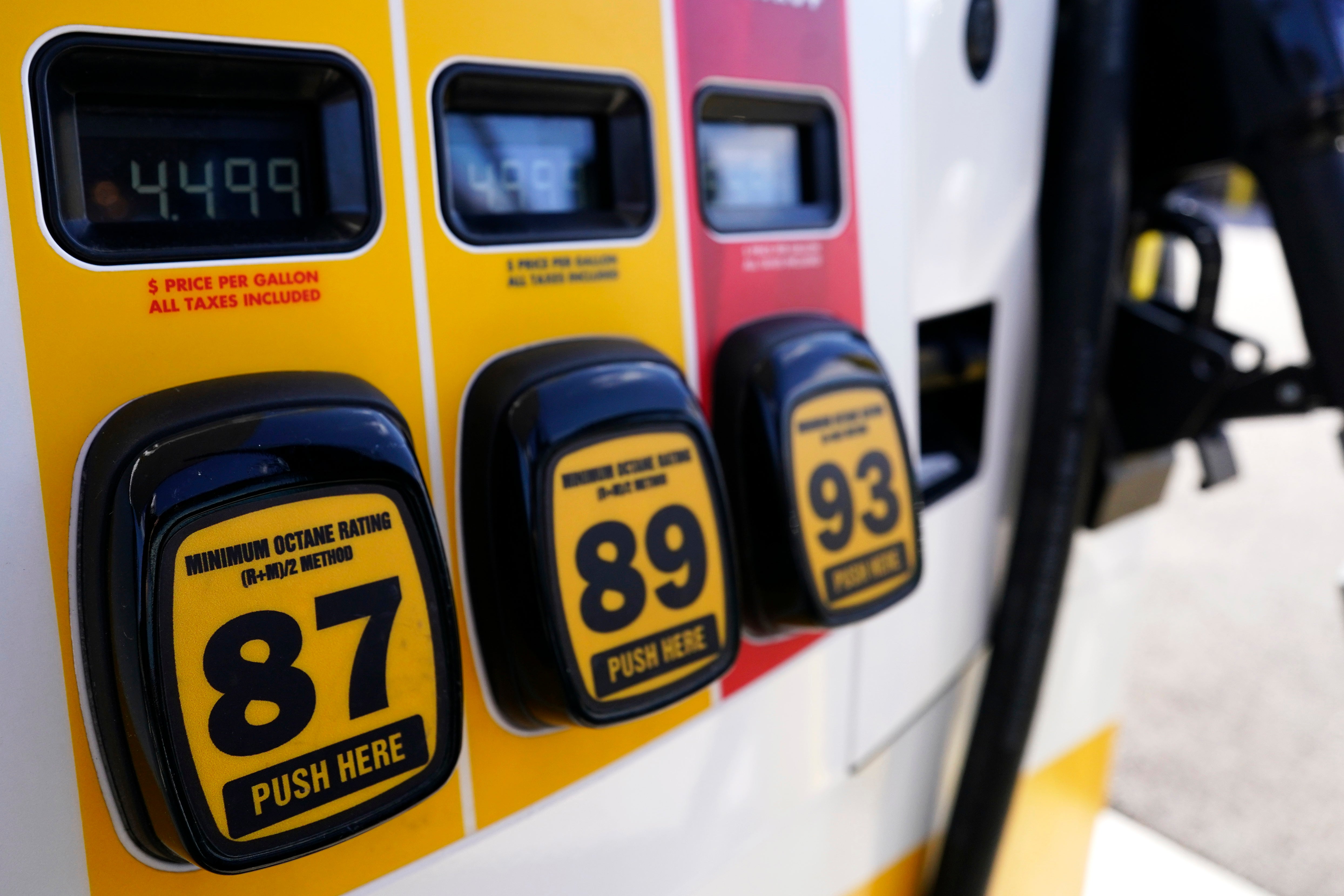As gas prices hit record, here's how to get better mileage
The dollars-and-cents counter on the gas pump seems to be spinning faster these days with U.S. gasoline prices hitting another record high on Tuesday

Your support helps us to tell the story
From reproductive rights to climate change to Big Tech, The Independent is on the ground when the story is developing. Whether it's investigating the financials of Elon Musk's pro-Trump PAC or producing our latest documentary, 'The A Word', which shines a light on the American women fighting for reproductive rights, we know how important it is to parse out the facts from the messaging.
At such a critical moment in US history, we need reporters on the ground. Your donation allows us to keep sending journalists to speak to both sides of the story.
The Independent is trusted by Americans across the entire political spectrum. And unlike many other quality news outlets, we choose not to lock Americans out of our reporting and analysis with paywalls. We believe quality journalism should be available to everyone, paid for by those who can afford it.
Your support makes all the difference.The dollars-and-cents counter on the gas pump seems to be spinning faster these days with U.S. prices hitting another record high on Tuesday.
The average price for a gallon of regular unleaded hit $4.37, according to AAA, 17 cents higher than just a week ago. Last year at this time it was just $2.97 per gallon. Crude oil prices already were high largely because many countries are refusing to buy Russian oil due to the invasion of Ukraine. And now we're heading into peak driving season and demand is up.
That means the cost to pump 15 gallons into a vehicle is now a whopping $65.55. Four fill-ups per month would cost more than $260, a big chunk out of just about anyone’s budget.
With gas prices that high, owners may be thinking about replacing their older vehicles with something more efficient. But that may not be cost effective. The global shortage of computer chips and other parts has cut into production of new vehicles, driving prices up. That sent many people into the used car market, also pushing up prices.
The average used vehicle cost $31,218 last month. The average new one? $45,341, according to Edmunds.com.
Generally, comparable electric vehicles are even more expensive than gasoline-fueled ones, though charging the battery is typically much cheaper.
All is not necessarily lost. There are steps you can take to make an old car, truck or SUV perform better, go farther and perhaps save some money on fuel:
— Make sure there’s enough air in the tires. Underinflated tires create more rolling resistance with the pavement, thereby reducing gas mileage. Inflate your tires to the pressure recommended on the inside of your driver’s side door. Check them periodically with a tire pressure gauge. “Typically, your gas mileage is going to be impacted by about 5% to 10% if you don’t have proper inflation,” said David Bennett, manager of repair systems for AAA. But don’t over-inflate. Doing so could cause tires to wear out more quickly.
— Properly maintain your vehicle. Follow the manufacturer’s recommendations for oil and other fluid changes and for replacing air and other filters. Replacing spark plugs at the proper intervals can help, too. “The vehicle is going to operate at its peak efficiency” with good maintenance, Bennett said. It will cost between $235 and $289 for new spark plugs on, say, a 10-year-old Ford F-150 pickup with a 4.6-liter V8, according to Repairpal.com.
— Watch your speed. AAA says fuel economy peaks around 50 miles per hour on most vehicles, then drops as speed rises. Reducing highway speeds by 5 mph (8 kilometers per hour) to 10 mph improves gas mileage by up to 14%.
— Plan your route in advance. Try to minimize backtracking. Do multiple tasks on each trip. Avoid rush hours and other peak travel times.
— Don’t idle too much. An engine burns one-quarter to a half-gallon (1.9 liters) of gas per hour when idling, but a warm engine needs only around 10 seconds worth of fuel to restart, according to AAA. So when safely possible, shut your engine off if you’ll be stopped for more than a minute. Many new vehicles do this on their own. Bennett says owners shouldn’t disable their new “stop-start” system.
— Coast to stop lights. Time your travel to keep rolling and avoid unnecessary stops. Cars consume a lot of fuel to get moving from a dead stop.
— Fill up with gasoline designated as “Top Tier.” Oil companies put additives in Top Tier gas that cuts carbon deposits. “As you start getting carbon buildup, the vehicle will not be running as efficiently,” Bennett said. Gasoline brands with the additives have stickers on the pumps. They can be found at https://toptiergas.com/licensed-brands/